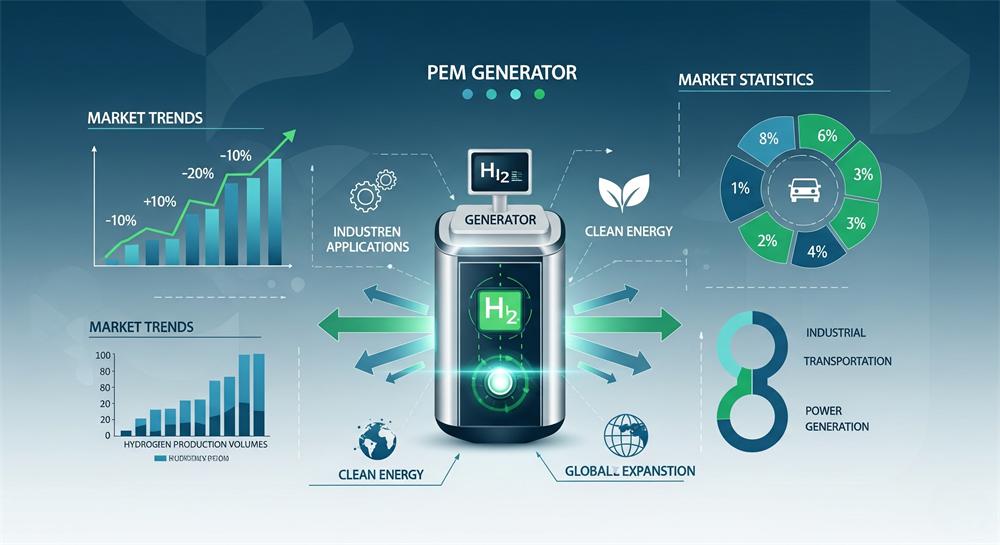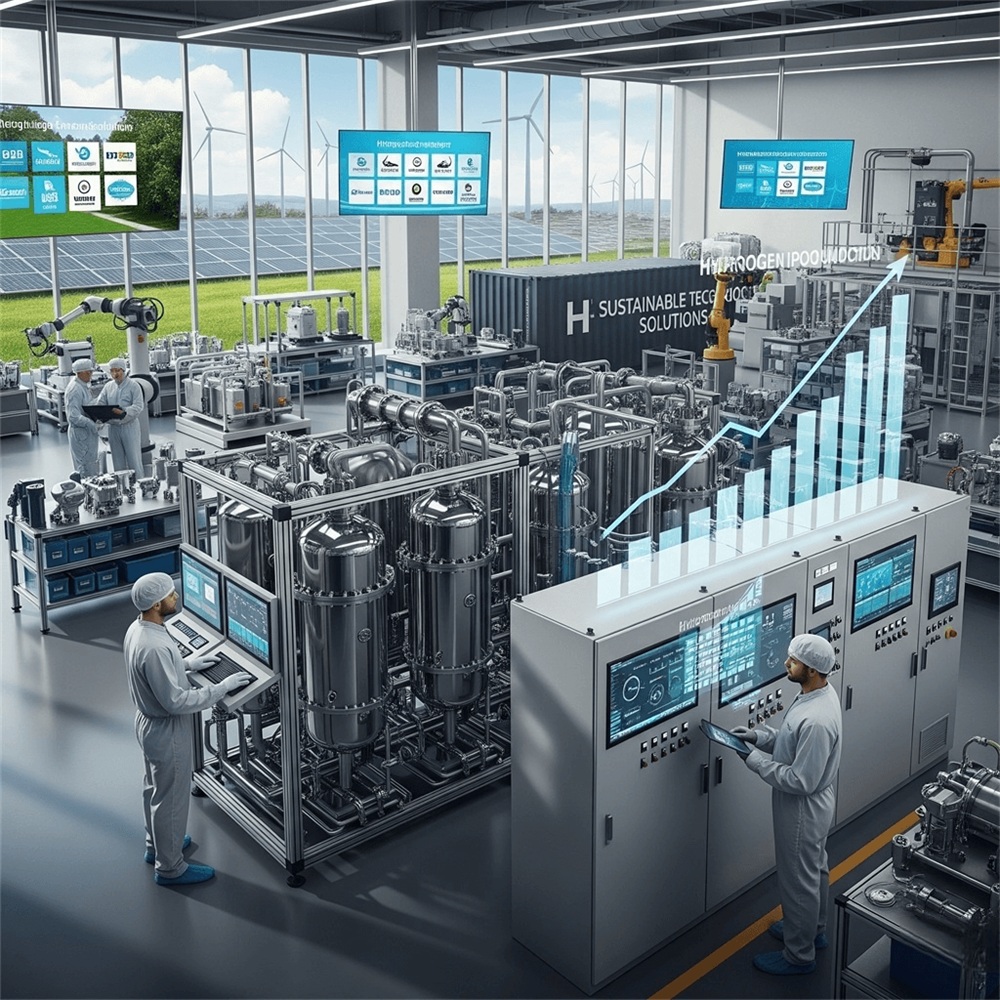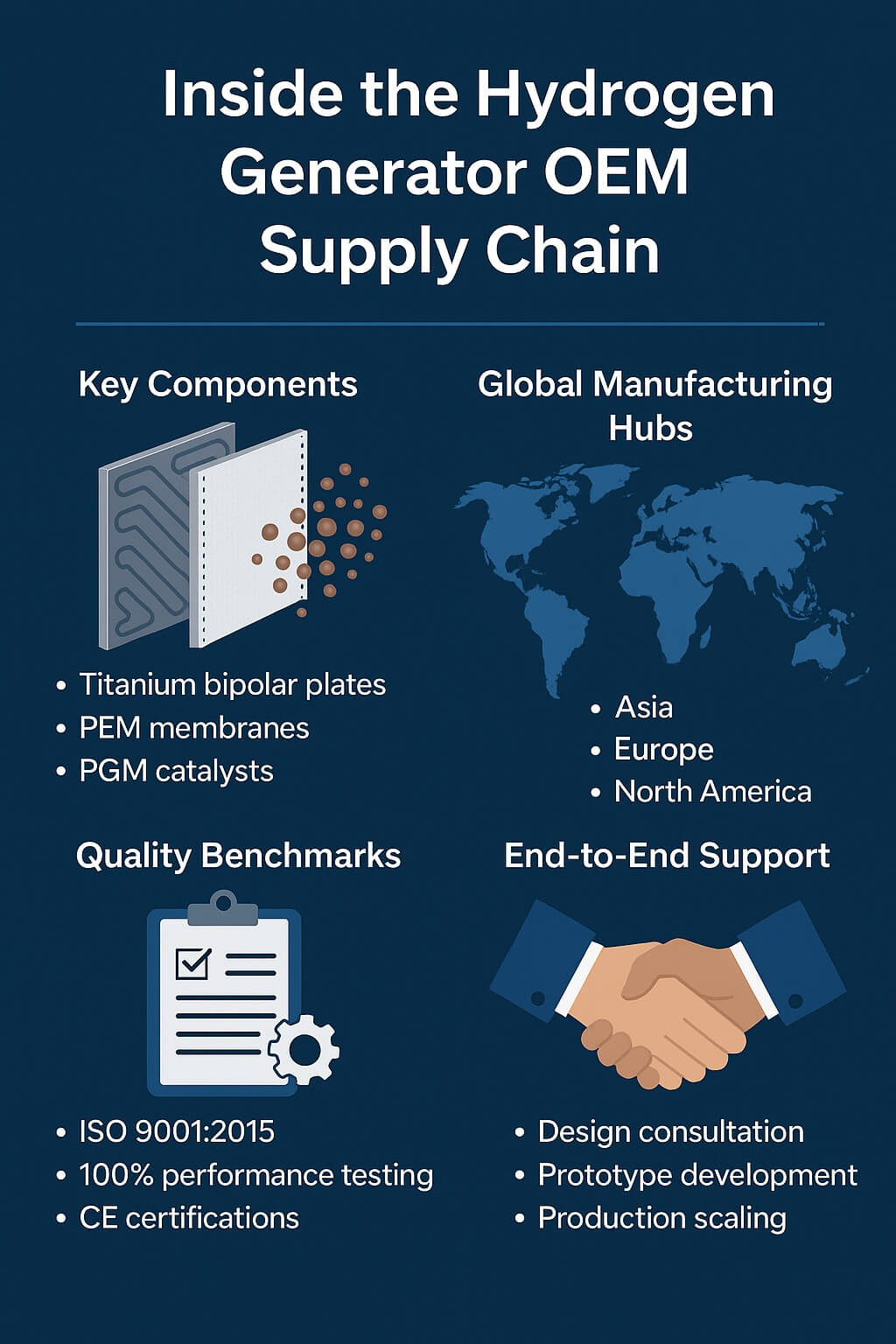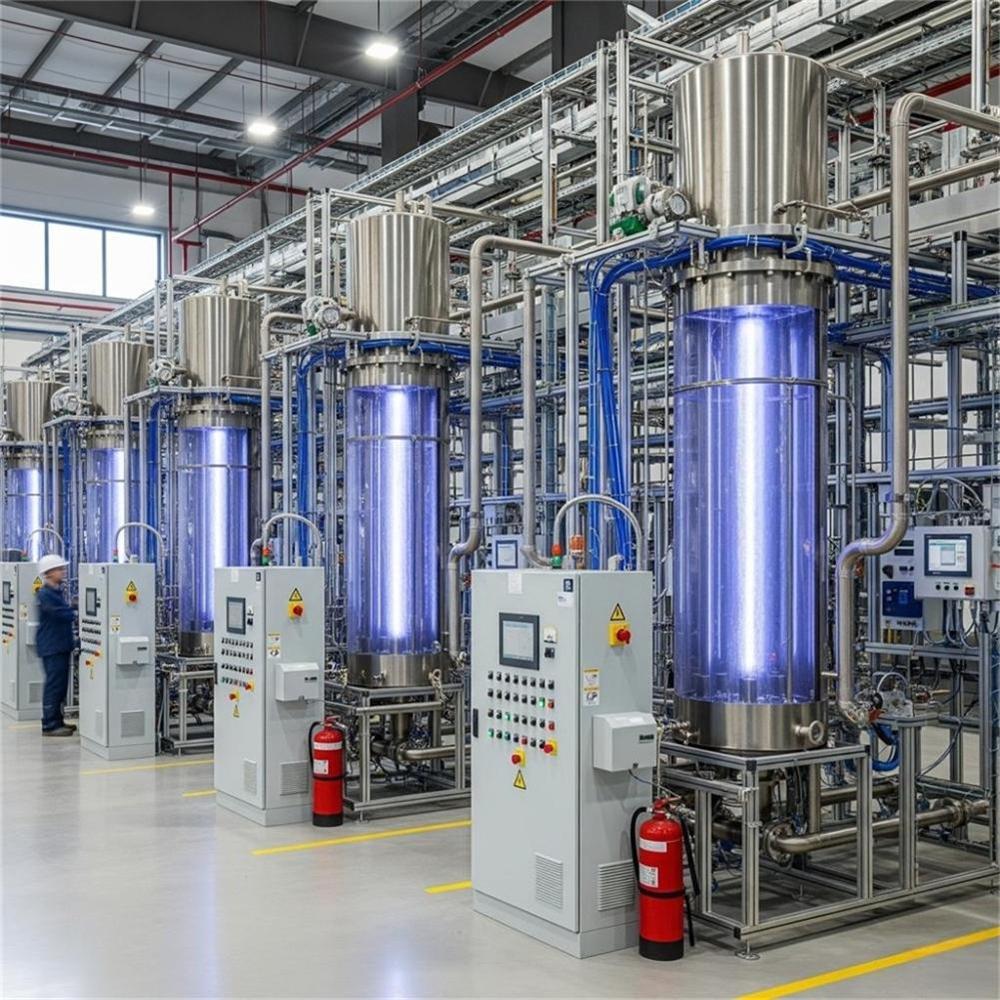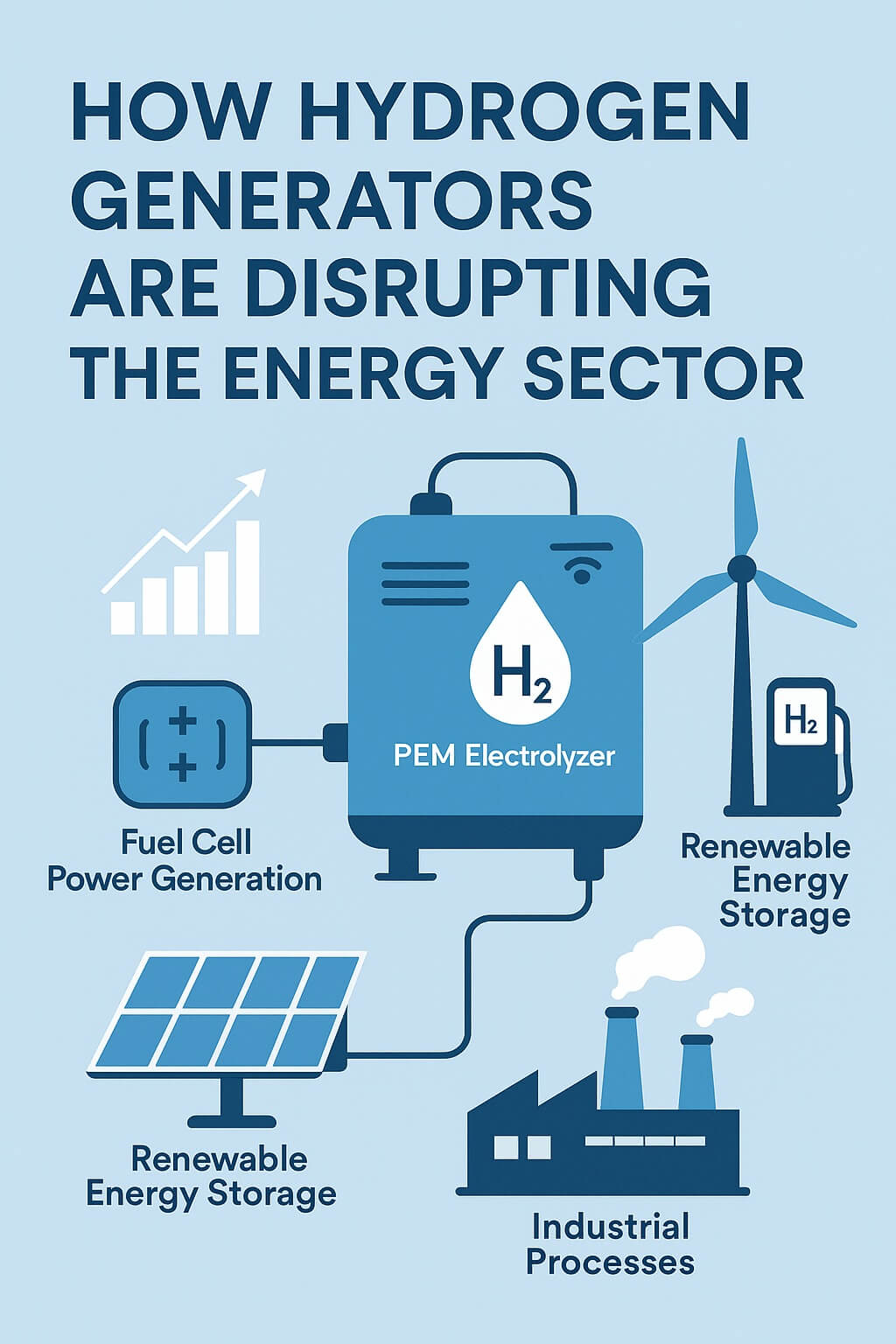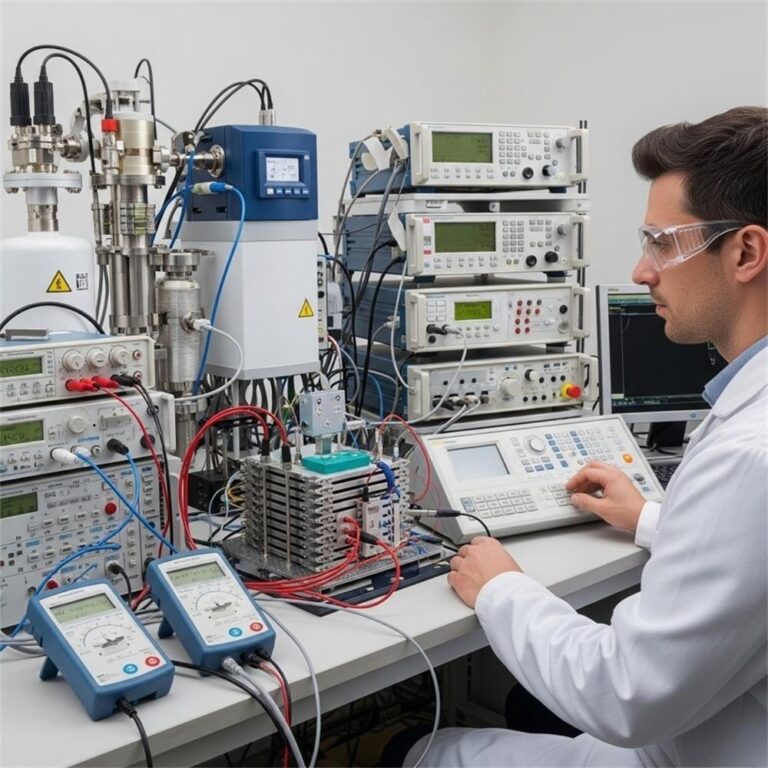The global hydrogen market is projected to reach $410 billion by 2030, with PEM technology driving much of this unprecedented growth. As industries worldwide pivot toward sustainable energy solutions, understanding how PEM technology works has become crucial for businesses seeking efficient, clean energy alternatives.
This comprehensive guide explains PEM (Proton Exchange Membrane) technology in detail, covering its mechanisms, applications, and role in the hydrogen economy. Whether you’re exploring hydrogen production or power generation solutions, this article will provide the technical insights needed to make informed decisions about PEM technology implementation.

What is PEM Technology?
PEM technology is an advanced electrochemical method that produces or utilizes hydrogen through reactions facilitated by a specialized proton-conducting membrane. This innovative approach to clean energy has revolutionized both hydrogen production and power generation since its development in the 1960s for NASA’s space program.
The technology operates through two primary applications:
PEM Electrolyzers convert electrical energy and water into hydrogen and oxygen, enabling efficient hydrogen production for industrial applications, energy storage, and fuel cell vehicles.
PEM Fuel Cells reverse this process, combining hydrogen and oxygen to generate electricity, heat, and water vapor, providing clean power for transportation, stationary applications, and portable devices.
The electrochemical reactions in PEM systems occur at relatively low temperatures (typically 60-80°C), making them ideal for applications requiring rapid response times and high efficiency. This temperature range also extends system lifespan and reduces maintenance requirements compared to high-temperature alternatives.
The Core Components of a PEM System
Understanding PEM technology requires examining its essential components, each engineered for optimal performance and durability.
Membrane Electrode Assembly (MEA)
The MEA serves as the heart of every PEM system, where all critical electrochemical reactions occur. This sophisticated component consists of several integrated layers:
The Proton Exchange Membrane forms the core barrier that selectively allows protons to pass while blocking electrons and gases. Modern PEMs are typically made from perfluorinated sulfonic acid polymers, offering excellent proton conductivity and chemical stability.
Catalyst layers coat both sides of the membrane, containing precious metals (primarily platinum) that facilitate the electrochemical reactions. The anode catalyst promotes water splitting in electrolyzers or hydrogen oxidation in fuel cells, while the cathode catalyst enables hydrogen formation or oxygen reduction respectively.
Gas Diffusion Layers (GDLs) provide structural support and ensure uniform gas distribution across the catalyst surfaces. These porous carbon-based materials also facilitate water management and electrical conductivity throughout the system.
Bipolar Plates
Bipolar plates distribute reactant gases evenly across the MEA surface while collecting generated electrical current. These components feature intricate flow field channels that ensure optimal gas distribution and water removal. Modern bipolar plates utilize titanium for electrolyzers (due to oxygen evolution) or graphite composites for fuel cells, balancing conductivity, corrosion resistance, and cost-effectiveness.
End Plates and Sealing Systems
End plates provide essential structural support and house electrical connections, while advanced sealing systems prevent gas leakage and maintain system integrity. These components must withstand significant compression forces while maintaining long-term reliability under varying operating conditions.
How PEM Electrolysis Works (Hydrogen Production)
PEM electrolysis transforms electrical energy and purified water into high-purity hydrogen through a precisely controlled electrochemical process.
The Electrolysis Process
Water Supply and Preparation: Deionized water enters the anode side of the electrolyzer, where it contacts the catalyst-coated membrane surface.
Electrochemical Reaction at the Anode: Applied electrical energy drives water oxidation, splitting water molecules into oxygen gas, protons (hydrogen ions), and electrons:
2H₂O → O₂ + 4H⁺ + 4e⁻Proton Transport: The generated protons selectively migrate through the proton exchange membrane to the cathode, while the membrane blocks electron and gas crossover.
Electron Flow: Electrons travel through the external electrical circuit, completing the circuit and enabling continuous operation.
Hydrogen Formation at the Cathode: Protons reaching the cathode combine with electrons to form hydrogen gas:
4H⁺ + 4e⁻ → 2H₂Gas Separation and Collection: The system separates and collects high-purity hydrogen (>99.95%) and oxygen, with built-in safety systems preventing gas mixing.
This process produces hydrogen with exceptional purity levels, making it suitable for demanding applications including fuel cells, semiconductor manufacturing, and chemical processing.
How PEM Fuel Cells Work (Power Generation)
PEM fuel cells reverse the electrolysis process, converting hydrogen’s chemical energy directly into electrical energy with remarkable efficiency.
The Power Generation Process
Hydrogen Supply: Hydrogen gas flows to the anode through carefully designed flow fields that ensure uniform distribution across the catalyst surface.
Hydrogen Oxidation: At the anode, platinum catalysts facilitate hydrogen splitting into protons and electrons:
H₂ → 2H⁺ + 2e⁻Proton Migration: Protons traverse the proton exchange membrane to reach the cathode, while electrons cannot pass through the membrane.
Electrical Current Generation: Electrons flow through the external circuit, generating direct current electricity that powers connected devices or charges storage systems.
Oxygen Reduction: At the cathode, oxygen from air combines with protons and electrons to form water:
O₂ + 4H⁺ + 4e⁻ → 2H₂OWater Management: The system removes generated water vapor through sophisticated humidity control systems, maintaining optimal membrane hydration for peak performance.
This electrochemical process achieves electrical efficiencies of 40-60%, significantly higher than internal combustion engines, while producing only water vapor as a byproduct.
Advantages of PEM Technology
PEM technology offers compelling benefits that make it increasingly attractive for industrial and commercial applications.
High Efficiency and Performance
PEM systems achieve exceptional energy conversion efficiency, with modern electrolyzers reaching 70-85% efficiency and fuel cells delivering 40-60% electrical efficiency. This high efficiency translates directly into operational cost savings and reduced energy consumption.
High Current Density
PEM technology supports high current densities (1-3 A/cm²), enabling compact system designs that minimize installation footprint and capital costs. This characteristic makes PEM systems particularly valuable for space-constrained applications.
Rapid Start-Up and Response
Unlike many competing technologies, PEM systems can start from ambient temperature and reach full operation within minutes. This rapid response capability makes them ideal for applications requiring quick power delivery or hydrogen production on demand.
High Purity Output
PEM electrolyzers produce hydrogen with purity levels exceeding 99.95% without additional purification steps, reducing system complexity and operational costs while meeting stringent quality requirements.
Low Operating Temperature
Operating temperatures of 60-80°C reduce material stress, extend component lifespan, and simplify system design compared to high-temperature alternatives. This moderate temperature range also enhances safety and reduces thermal management requirements.
Proven Durability
Well-designed PEM systems demonstrate operational lifespans exceeding 80,000 hours with proper maintenance, providing excellent return on investment for industrial applications.
Challenges and Future Directions
While PEM technology offers significant advantages, several challenges drive ongoing research and development efforts.
Current Limitations
Cost Considerations: High-performance catalyst materials, particularly platinum group metals, contribute significantly to system costs. Reducing catalyst loading while maintaining performance remains a priority for cost reduction.
Durability Enhancement: Membrane degradation and catalyst dissolution over extended operation periods require ongoing attention. Research focuses on developing more robust materials and operating strategies.
Water Management Optimization: Maintaining optimal membrane hydration under varying operating conditions requires sophisticated control systems and impacts overall system complexity.
Research and Development Focus Areas
Advanced Catalyst Development: Scientists are developing non-precious metal catalysts and optimizing catalyst layer structures to reduce costs while maintaining or improving performance.
Next-Generation Membranes: Research into alternative membrane materials aims to improve durability, reduce costs, and enhance performance under diverse operating conditions.
System Integration and Control: Advances in system design, control algorithms, and component integration continue to improve overall system performance and reliability.
PEM Technology Applications Across Industries
PEM technology’s versatility enables deployment across diverse industrial sectors, each benefiting from its unique characteristics.
Transportation Sector
Fuel Cell Vehicles: PEM fuel cells power passenger cars, commercial vehicles, buses, and heavy-duty trucks, offering zero-emission transportation with refueling times comparable to conventional vehicles.
Marine and Aviation: Emerging applications include fuel cell-powered ships, submarines, and aircraft, where high energy density and zero emissions provide significant advantages.
Stationary Power Applications
Backup Power Systems: PEM fuel cells provide reliable emergency power for critical facilities including hospitals, data centers, and telecommunications infrastructure.
Combined Heat and Power (CHP): Integrated systems capture waste heat for building heating, achieving overall efficiencies exceeding 80%.
Grid-Scale Energy Storage
Power-to-Gas Systems: Large-scale PEM electrolyzers convert excess renewable energy into hydrogen for long-term storage, enabling grid balancing and seasonal energy storage.
Hydrogen Hubs: Industrial complexes integrate PEM electrolyzers with renewable energy sources to produce hydrogen for multiple applications including transportation fuels, industrial processes, and power generation.
Industrial Processes
Chemical Manufacturing: High-purity hydrogen from PEM electrolyzers serves as feedstock for ammonia production, petroleum refining, and specialty chemical manufacturing.
Metal Processing: Clean hydrogen enables advanced metallurgical processes, including direct reduction of iron ore and powder metallurgy applications.
Portable and Specialty Applications
Portable Power: Miniaturized PEM fuel cells power portable electronics, remote monitoring equipment, and military applications where reliable, silent operation is essential.
PEM Technology vs. Other Hydrogen Technologies
Understanding PEM technology’s position relative to alternative approaches helps inform technology selection decisions.
Alkaline Electrolysis Comparison
Alkaline electrolysis operates at higher efficiency levels but requires pure water and produces hydrogen with lower purity. PEM electrolysis offers faster response times, higher current density, and simpler system operation, making it preferable for dynamic applications despite higher capital costs.
Solid Oxide Technology Comparison
Solid Oxide Electrolysis Cells (SOEC) achieve higher theoretical efficiency but operate at 700-1000°C, requiring complex thermal management and longer start-up times. PEM technology’s lower operating temperature provides operational flexibility and reduced system complexity.
Alternative Fuel Cell Types
Compared to phosphoric acid, molten carbonate, or solid oxide fuel cells, PEM fuel cells offer lower operating temperatures, faster start-up, and higher power density. However, they currently require higher-cost materials and have lower tolerance for fuel impurities.
Conclusion
PEM technology represents a cornerstone of the emerging hydrogen economy, offering proven solutions for both hydrogen production and power generation. Its combination of high efficiency, rapid response, compact design, and operational flexibility makes it increasingly attractive for diverse industrial applications.
As material costs continue declining and performance improvements accelerate, PEM technology is positioned to play an increasingly important role in the global transition to sustainable energy systems. The technology’s maturity, combined with ongoing research and development, ensures continued innovation and expanding application opportunities.
For organizations evaluating clean energy technologies, PEM systems offer a compelling combination of technical performance, operational reliability, and future scalability that supports long-term strategic objectives while delivering immediate operational benefits.
Ready to Implement PEM Technology?
Interested in implementing PEM technology for your industrial needs?
Contact us today for a consultation and explore how our tailored solutions can drive efficiency and sustainability in your operations. Get a quote now!
Looking for reliable PEM electrolyzers or fuel cells?
Reach out to our team to discuss your specific requirements and discover how we can help you achieve your clean energy goals. Inquire today!
Discover the benefits of PEM technology for your business.
Contact us for expert advice and customized solutions. Enquire now to speak with our experts!

